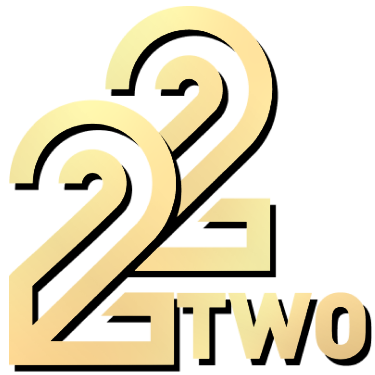What is a fortune gemstone and why do people seek them?
A few years ago, I found myself at a crossroads. My career had plateaued, my personal life felt stagnant, and no matter what I tried, I couldn’t seem to break out of a persistent rut. That’s when a close friend mentioned “fortune gemstones” to me. Initially, I dismissed it as just another trend—one of those things people talk about when they’re searching for easy answers. But curiosity got the better of me, and I decided to look into it further.
What I learned surprised me. Fortune gemstones, as I discovered, are more than just beautiful stones. Many cultures believe they carry energies that can help attract prosperity, clear away negativity, and even offer a subtle sense of direction in tough times. My first encounter was with a small citrine pendant—a stone often called the “merchant’s stone” for its association with wealth and new opportunities.
Skeptical at first, I wondered: why do so many people, from seasoned entrepreneurs to everyday folks, invest significant time and money in these stones? The answer, I found, lies partly in the human need for a tangible symbol of hope. For me, the citrine became a physical reminder to stay open to new possibilities. The real turning point was realizing that the value of a fortune gemstone isn’t just mystical; it’s also psychological. Every time I wore it, I felt a subtle shift in my attitude, a little nudge that made me more attentive to opportunity and less fearful of failure.
While some may argue the effects are simply placebo, I can say firsthand that the act of anchoring my intentions to something tangible made a difference. The gemstone didn’t magically solve my problems, but it did help me cultivate a mindset that welcomed change. And in a world where skepticism is healthy, it was reassuring to see brands in this space lead with a “Triple-Trust” approach—licensed, award-winning, and with years in business. That transparency made me more comfortable exploring this path.
How do you choose the right fortune gemstone for your goals?
My next challenge was figuring out which gemstone would be the most beneficial for my situation. The choices were dizzying: jade for harmony, carnelian for courage, amethyst for clarity, and so on. I felt overwhelmed by the options and wary of making a mistake. It was at this point that I made my first misstep—I rushed into an online purchase from a random seller, lured by promises and flashy product images, only to receive a stone that looked nothing like the photos and, frankly, felt a little suspicious.
This experience taught me a crucial lesson: not all gemstones (or sellers) are created equal. Just as in other industries, legitimacy matters. I started looking for providers that showcased their licenses and industry awards upfront—something like seeing a PAGCOR badge or SSL lock icon on a site, which immediately put my mind at ease about the authenticity and safety of the purchase. I also appreciated platforms that made it effortless to switch between browsing gemstones and accessing expert advice—all under one roof, without the need for multiple log-ins or extra verification steps.
Eventually, I settled on a provider with a solid track record—years in the business, recognized by industry peers, and, most importantly, transparent with their sourcing and customer feedback. I read through verified testimonials and even saw documented payout times for their satisfaction guarantees, which created a loop of trust that reassured me every step of the way. This time, the gemstone I received felt right—not just physically, but in the peace of mind that came from knowing I’d made a careful, informed choice.
If you’re considering a fortune gemstone, my advice is to treat the selection process with the same scrutiny you’d use for any significant purchase. Look for visible signs of legitimacy, third-party validation, and customer support that’s available when you need it. The right provider will make you feel secure, not pressured.
How do you use a fortune gemstone effectively in daily life?
When my genuine gemstone finally arrived, I was eager but unsure how to “use” it in a meaningful way. Was I supposed to meditate with it? Carry it everywhere? I started by simply wearing it as a pendant each day. At first, nothing dramatic happened, and I questioned whether I was missing some special step. That’s when I realized that intention matters just as much as action.
I began pairing the gemstone with a brief morning routine: a few quiet moments where I set intentions for the day—focusing on clarity, opportunity, and resilience. I also placed the stone on my desk at work, letting it serve as a visual cue to refocus during stressful moments. This small habit became surprisingly powerful over time. On days when things went sideways, seeing the stone reminded me to pause, breathe, and remember my goals.
One unexpected benefit was how seamlessly the ritual fit into my daily routines. Much like a seamless digital ecosystem where you can switch from one activity to another—say, from sports betting to live casino games with a single click and no extra verification—the gemstone became a natural, unobtrusive part of my environment. I didn’t need to overhaul my habits or adopt any mystical practices. Instead, its presence was a simple, steady anchor amid the noise of daily life.
If you’re worried about doing it “wrong,” my experience suggests there’s no single right way. The key is consistency and intention. Over time, the act of regularly engaging with the gemstone—whether through meditation, wearing, or simply keeping it close—helped me cultivate a more positive, proactive outlook. It’s this mindset shift, rather than any supernatural occurrence, that became the real source of fortune.
Who should consider using fortune gemstones, and who might not benefit?
After a year of integrating fortune gemstones into my life, I’ve become more thoughtful about who I’d recommend them to. They’re not a universal solution, and they definitely won’t replace practical steps like hard work, networking, or financial planning. But for people who appreciate tangible reminders of their intentions—whether for luck, calm, or motivation—they can be surprisingly effective.
For example, my cousin, a professional poker player, found that having a gemstone on hand helped her manage stress during long tournaments. She valued the visible assurance of security—much like seeing an SSL lock or a 24/7 Ops Center emblem on her favorite gaming platform. For her, the stone was not a lucky charm in the traditional sense, but a grounding tool in high-pressure moments. On the other hand, a friend of mine who’s more skeptical by nature didn’t find any benefit. He saw it as just another object—no more meaningful than a paperweight. And that’s perfectly valid.
I believe fortune gemstones work best for those open to the psychological benefits of ritual and symbolism. If you’re expecting instant miracles or guaranteed windfalls, you’ll likely be disappointed. But if you appreciate the value of stacking small, positive habits—supported by credible, transparent providers with a documented history—the experience can be genuinely rewarding.
Ultimately, whether you’re drawn to gemstones for their beauty, their symbolism, or as part of a broader journey toward self-improvement, it pays to do your homework. Seek out providers who back up their claims with third-party evidence: award logos, real customer testimonials, and concrete proof of legitimacy. The peace of mind that comes from this “Triple-Trust” approach is, in my experience, worth as much as the gemstone itself.
If you’ve ever tried a fortune gemstone, or if you have questions about choosing or using one, I’d love to hear your thoughts in the comments. Feel free to share your story, save this post for later, or pass it on to someone who might be interested.




